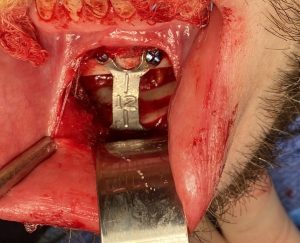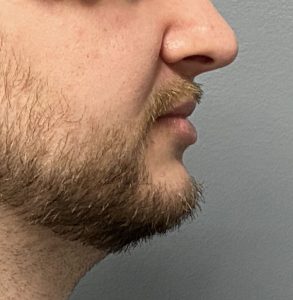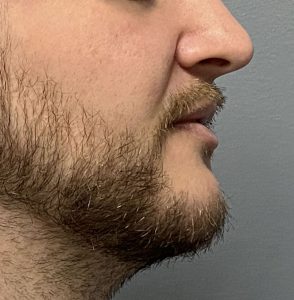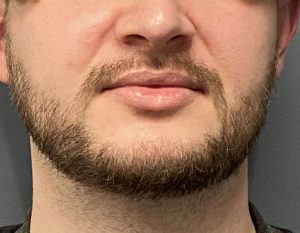Background: Lengthening of the lower face can be done by an implant or an osteotomy. The difference between the two lies in both surgical technique as well as outcome. The soft tissue chin pad is the key anatomic factor that makes the difference. With an implant the soft tissue chin pad must be completely detached from the bone to place the implant. Once the implant is placed on the bone the soft tissue chin pad must then be pulled down over it. The chin pad can only stretch so much and, as a result, large amounts of vertical lengthening may limit getting the soft tissue down over the new length. (Resulting in a double chin bump)
Conversely, when an intraoral osteotomy is performed the attachments to the underside of the chin bone remain intact. This no matter how much the chin is lengthened by dropping the bone down the soft tissue chin pad follows it. (no risk of a soft tissue pad deformity) The only potential soft tissue deformity is that of the lower lip, which theoretically could be pulled down as the bone is lengthened, but that has yet to be seen. I think it does not occur because, unlike the inferior chin pad, the lower lip has far greater stretch or elasticity.
In my extensive experience with chin lengthening a good rule to follow is that is any more than 6 to 7mms of lengthening are needed an osteotomy is the way to go. The other observation I have learned is that if the lower third of the face is significantly short more than 7mms are needed to make a noticeable difference. Thus implants have their role when the vertical lengthening needed is more modest or is a secondary aesthetic need to increasing horizontal projection.
Case Study: This young male wanted some form of jaw augmentation but had trouble deciding between jaw angle implants for width or vertical chin lengthening. He could only do one of the two. He had a flat mandibular plane angle with his chin at the same horizontal level as that of his jaw angles. Using computer imaging to show the different effects between the two procedures it became clear that the most effective change was to lengthen the chin. Imaging also conformed that the lengthening should be no less than 10mms.

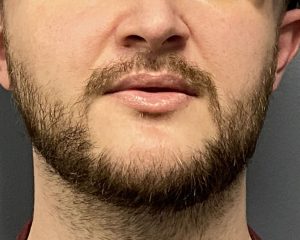
In the short face the easiest facial third to change is the lower one. One powerful tool to do so is the vertical lengthening chin osteotomy which can lengthen it easily by 1omms and, in extreme cases, I have done so out to 2omms. In smaller vertical lengthening the bone acts like a hinge at the back wings of the osteotomy. But as the chin continues to drop down in greater amounts the posterior wings will lose bone contact. In doing so the disruption the mandibular plane angle becomes more apparent. But at the 10mm range of lengthening this is less significant.
Key Points:
1) Significant lengthening of the lower third of the face usually needs at least 8 to 10mms, often more than the patient initially thinks.
2) An opening wedge intraoral chin osteotomy easily provides 10mms or more of bony lengthening and requires an interpositional graft for bony healing across the defect to occur.
3) With the opening wedge osteotomy some slight backward rotation of chin projection can occur so this needs to be factored into how the spanning plate is applied.
Dr. Barry Eppley
World-Renowned Plastic Surgeon



